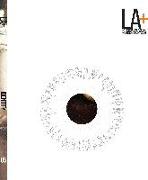LA+ JOURNAL IDENTITY
BücherAngebote / Angebote:
Ever since the 18th century when Alexander Pope advised his peers to "consult the genius of place, " the idea that designers could interpret and then express the essential identity of a place has been venerated in landscape architecture. This issue of LA+ is devoted to critically exploring the nexus between place and identity with contributions from disciplines as varied as landscape architecture, architecture, philosophy, literature, ethics, marketing, anthropology, history, politics, and visual arts. In this issue:. Ursula Heise discusses how we have become alien to our environment and why the notion of 'sense of place' must now give way to 'sense of planet', . Nicole Porter examines the commercial phenomenon of landscape branding, with starkly different examples from Singapore and Norway, . Mark Raggatt explains how a critical postcolonial discourse of Australian identity has been invoked by a development featuring a building-sized portrait of an Indigenous man, . Jim Igoe reflects on the way that protected areas in Tanzania negatively impact cultural identity in order to secure ecological identity, . Andrew Graan and Aleksandar Takovski contemplate what Skopje's recent city-wide installation of figurative monuments says about contemporary Macedonian national identity, . Ed Casey examines the complex identity of built place through a philosophical lens, . Charles Waldheim discusses the changing identity of design schools in the United States, . Rui Yang and Xiaodi Zheng write about the professional identity of landscape architecture in China, . Mark Kingwell addresses how place and space shape self-identity, invoking Franz Kafka's literary genius in his exploration of where identity is located.. Julian Raxworthy relates the provenance of plants to cultural identity by documenting the story of a humble garden in an informal settlement in Cape Town, . Clive Hamilton argues that the Anthropocene requires new identities as a western sense of self isolated from the surrounding world becomes increasingly untenable, . Kerri Culhane and Molly Garfinkel find strong community identity in a New York housing development of the type lambasted by Jane Jacobs and the new urbanists, . Miriam García García and Victor Ténez Ybern look at how an instance of 'undoing' design has resurrected the identity of Spain's Catalan coast, . Dirk Sijmonds reflects on how for centuries the Dutch have collectively shaped their nation's landscapes as a continuing work in progress, . Nicole Lambrou and Eric Lum question the reality of The Sea Ranch's famed eco-identity, and. Paul Preissner visits Munich, North Dakota, where he finds a powerful sense of place precisely because of its absence.The issue also features interviews with landscape architect Martin Rein-Cano from Berlin's Topotek1 and with British-Australian author and public artist Paul Carter. The feature artist for this issue is Singaporean-based interdisciplinary artist Robert Zhao Renhui.
Folgt in ca. 15 Arbeitstagen
